Lire la suite
A Beach in Brittany (La Baule?)
Watercolour over pencil
20,1 x 29 cm
Signed bottom left: Elisabeth Sonrel
On the back: Profile of a Breton Woman in watercolour, approx. 9 x 6,5 cm
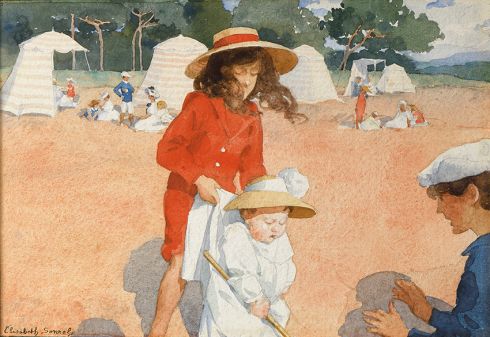
Elisa Marie Stéphanie Adrienne Sonrel, known as Elisabeth Sonrel, was born into a family of amateur artists. Her father, a medical doctor, was an artist in his spare time, as was her uncle, a magis- trate and watercolourist. However, Elisabeth Sonrel decided to take up art professionally and went to Paris to study at the Académie Julian when she was about 17 years old – at the time women were still not admitted to the École des Beaux-arts. At the very beginning of her career, Sonrel mainly produced watercolours, and she started exhibiting them in 1893 at the Salon des artistes français. She also produced illustrations on religious themes for prayer books. At the turn of the century, she shifted her focus to painting and began to work in larger formats, although she continued painting watercolours, a technique in which she excelled and which she never gave up. The female figure – the Marian heroine as the feminine ideal of chivalric romance –, occupied a central place in her work, which lay somewhere between Symbolism and Pre-Raphaelism. But much of what she produced was also concerned with capturing images of everyday life en plein air.1
1. In general, for all documentation on the life and work of Élisabeth Sonrel, we refer to academic research by Charlotte Foucher: La Vierge, la dame, la muse : une approche des représentations du féminin dans le Symbolisme d’Élisabeth Sonrel (1874-1953), 2nd year Masters dissertation in Art History, under the supervision of Pascal Rousseau, and defended at the Université François Rabelais, Tours in 2008; and also her article: Charlotte Foucher, “Elisabeth Sonrel (1874-1953) : une artiste symboliste oubliée”, Bulletin des Amis de Sceaux, n° 25, 2009, p. 1-27.
2. There is a whole set of watercolours identified as depicting Le Croisic and dated 1928 and 1932 (Paris art market).
3. On this subject, see: Femmes artistes en Bretagne 1850-1950, exh. cat., Marie-Paule Piriou, Jean-Marc Michaud, Denise Delouche, Musée du Faouët, 29 June-13 October 2013, Le Faouët, Liv’Éditions, 2013, p. 40, 96, 98-99 and 105.
Réduire
Lire la suite
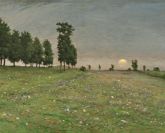 Antoine Chintreuil
(1814 - 1873)
Antoine Chintreuil
(1814 - 1873)
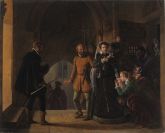 Pierre Révoil
(Lyon 1776 – 1842)
Pierre Révoil
(Lyon 1776 – 1842)
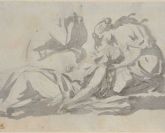 Jacques-Louis David
(Paris, 1748 – Bruxelles, 1825)
Jacques-Louis David
(Paris, 1748 – Bruxelles, 1825)
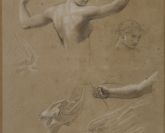 Jean-Baptiste REGNAULT, Baron
Paris, 1754 – Id., 1829
Jean-Baptiste REGNAULT, Baron
Paris, 1754 – Id., 1829
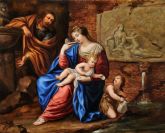 Jacques Stella
(Lyon, 1596 – id., 1657)
Jacques Stella
(Lyon, 1596 – id., 1657)
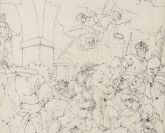 Louis Adrien Masreliez
(Paris, 1748 – Stockholm, 1810)
Louis Adrien Masreliez
(Paris, 1748 – Stockholm, 1810)
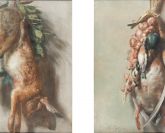 Antoine Berjon
(Lyon, 1754 – id., 1838)
Antoine Berjon
(Lyon, 1754 – id., 1838)
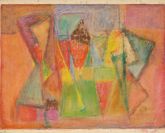 Geer van Velde
(Lisse, 1898 – Cachan, 1977)
Geer van Velde
(Lisse, 1898 – Cachan, 1977)
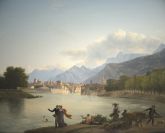 Jean-Joseph-Xavier Bidauld
(Carpentras, 1758 - Montmorency, 1846)
Jean-Joseph-Xavier Bidauld
(Carpentras, 1758 - Montmorency, 1846)
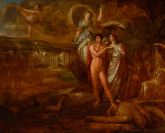 Philippe-Auguste Hennequin
(Lyon, 1762 – Leuze, près de Tournai, 1833)
Philippe-Auguste Hennequin
(Lyon, 1762 – Leuze, près de Tournai, 1833)
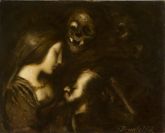 Julien Adolphe Duvocelle
(Lille, 1873 – Corbeil-Essonnes, 1961)
Julien Adolphe Duvocelle
(Lille, 1873 – Corbeil-Essonnes, 1961)
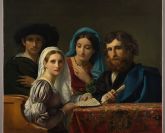 François-Joseph Navez
(Charleroi, 1787 – Bruxelles, 1869)
François-Joseph Navez
(Charleroi, 1787 – Bruxelles, 1869)
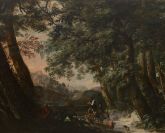 Philippe-Auguste Immenraet
(Anvers, 1627 – id., 1679)
Philippe-Auguste Immenraet
(Anvers, 1627 – id., 1679)
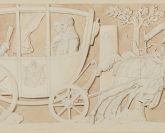 Alexandre-Evariste Fragonnard
(Grasse, 1780 – Paris, 1850)
Alexandre-Evariste Fragonnard
(Grasse, 1780 – Paris, 1850)
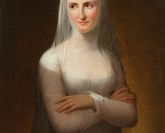 Jeanne-Elisabeth Chaudet
(Paris, 1767 - id., 1832)
Jeanne-Elisabeth Chaudet
(Paris, 1767 - id., 1832)
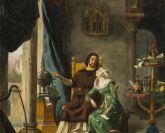 Charles Barthélemy Jean Durupt
(Paris, 1804 - id., 1838)
Charles Barthélemy Jean Durupt
(Paris, 1804 - id., 1838)
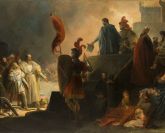 Alexandre-Evariste Fragonard
(Grasse, 1780 - Paris, 1850)
Alexandre-Evariste Fragonard
(Grasse, 1780 - Paris, 1850)
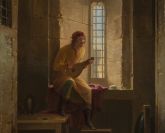 Jean-Antoine Laurent
(Baccarat, 1736 - Epinal, 1832)
Jean-Antoine Laurent
(Baccarat, 1736 - Epinal, 1832)
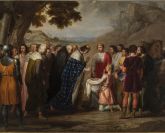 Rafael Tejeo Diaz, dit Tejeo (ou Tegeo)
(Caravaca de la Cruz, Murcie, 1798 - Madrid, 1856)
Rafael Tejeo Diaz, dit Tejeo (ou Tegeo)
(Caravaca de la Cruz, Murcie, 1798 - Madrid, 1856)
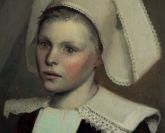 Eric Forbes-Robertson
(Londres, 1865 – id., 1935)
Eric Forbes-Robertson
(Londres, 1865 – id., 1935)
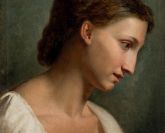 Victor Orsel
(Oullins, 1795 – Paris, 1850)
Victor Orsel
(Oullins, 1795 – Paris, 1850)
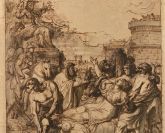 François-Xavier Fabre
(Montpellier, 1766 – id., 1837)
François-Xavier Fabre
(Montpellier, 1766 – id., 1837)
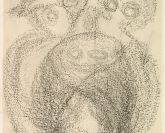 Jean Raine
(Bruxelles, 1927 – Rochetaillée-sur-Saône, 1986)
Jean Raine
(Bruxelles, 1927 – Rochetaillée-sur-Saône, 1986)
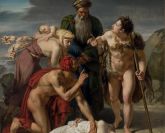 Merry-Joseph Blondel
(Paris, 1781 – id., 1853)
Merry-Joseph Blondel
(Paris, 1781 – id., 1853)
 Jean-Jacques Forty
(Marseille, 1743 – Aix-en-Provence, 1801)
Jean-Jacques Forty
(Marseille, 1743 – Aix-en-Provence, 1801)
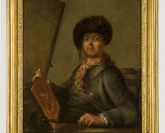 François Eisen
(1695, Bruxelles – 1778, Paris)
François Eisen
(1695, Bruxelles – 1778, Paris)
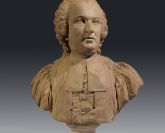 Clément Jayet
(Langres, 1731 - Lyon, 1804)
Clément Jayet
(Langres, 1731 - Lyon, 1804)
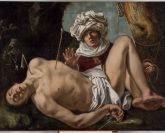 Cornelis De Beer
(Utrecht, 1591 - Madrid, 1651)
Cornelis De Beer
(Utrecht, 1591 - Madrid, 1651)
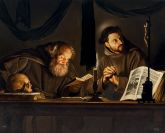 Adam De Coster
(Malines, c. 1586, Antwerp, 1643)
Adam De Coster
(Malines, c. 1586, Antwerp, 1643)
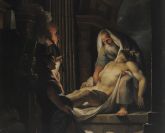 Giovanni David
(Gabella Ligure, 1749 - Gênes, 1790)
Giovanni David
(Gabella Ligure, 1749 - Gênes, 1790)
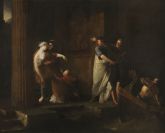 Antoine Dubost
(Lyon, 769 - Paris, 1825)
Antoine Dubost
(Lyon, 769 - Paris, 1825)
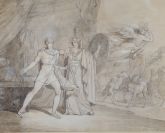 Joseph Denis Odevaere
(Bruges, 1775 - Bruxelles, 1830)
Joseph Denis Odevaere
(Bruges, 1775 - Bruxelles, 1830)
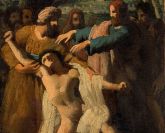 Henri-Joseph Forestier
(Puerto Hincado, Santo Domingo, 1787 – Paris, 1872)
Henri-Joseph Forestier
(Puerto Hincado, Santo Domingo, 1787 – Paris, 1872)
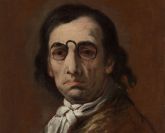 Luca Giordano
(Naples, 1634 - id., 1705)
Luca Giordano
(Naples, 1634 - id., 1705)
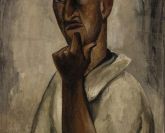 Emile Didier
(Lyon, 1890 - id., 1965)
Emile Didier
(Lyon, 1890 - id., 1965)
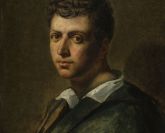 Pierre-Nolasque Bergeret
(Bordeaux, 1782 - Paris, 1863)
Pierre-Nolasque Bergeret
(Bordeaux, 1782 - Paris, 1863)
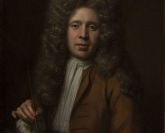 André Bouys
(Hyères, 1656 - Paris, 1740)
André Bouys
(Hyères, 1656 - Paris, 1740)
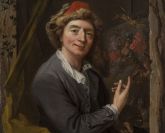 Jacques-François Delyen
(Gand, 1684 - Paris, 1761)
Jacques-François Delyen
(Gand, 1684 - Paris, 1761)
-165x133.jpg) Jean-Jacques de Boissieu
(Lyon, 1736 - id., 1810)
Jean-Jacques de Boissieu
(Lyon, 1736 - id., 1810)
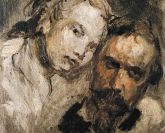 Jean-Baptiste Carpeaux
(1827 - 1875)
Jean-Baptiste Carpeaux
(1827 - 1875)
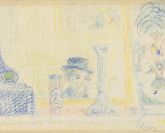 James Ensor
(Ostende, 1860 - id., 1949)
James Ensor
(Ostende, 1860 - id., 1949)
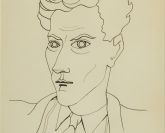 Jean Cocteau
(Maisons-Laffitte, 1889 - Milly-la-Forêt, 1963)
Jean Cocteau
(Maisons-Laffitte, 1889 - Milly-la-Forêt, 1963)
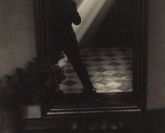 Antoine Demilly
(Mâcon, 1892 – Lyon, 1964)
Antoine Demilly
(Mâcon, 1892 – Lyon, 1964)
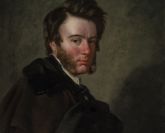 Charles Dukes
actif à Londres entre 1829 et 1865
Charles Dukes
actif à Londres entre 1829 et 1865
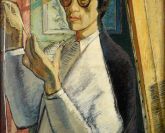 Crikor GARABÉTIAN
Bucarest, 1908 – Lyon, 1993
Crikor GARABÉTIAN
Bucarest, 1908 – Lyon, 1993
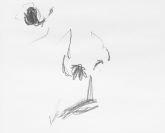 Pierre Tal-Coat [Pierre Jacob]
(Clohars-Carnoët, 1905 – Saint-Pierre-de-Bailleul, 1985)
Pierre Tal-Coat [Pierre Jacob]
(Clohars-Carnoët, 1905 – Saint-Pierre-de-Bailleul, 1985)
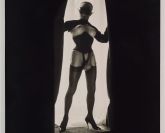 Pierre Molinier
(Agen, 1900 - Bordeaux, 1976)
Pierre Molinier
(Agen, 1900 - Bordeaux, 1976)
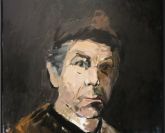 Patrice Giorda
né en 1952
Patrice Giorda
né en 1952
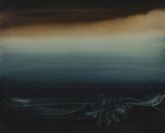 Frédéric Benrath
(Lyon, 1930 - Paris, 2007)
Frédéric Benrath
(Lyon, 1930 - Paris, 2007)
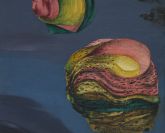 Félix Labisse
(Marchiennes (Nord), 1908 - Neuilly-sur-Seine, 1982)
Félix Labisse
(Marchiennes (Nord), 1908 - Neuilly-sur-Seine, 1982)
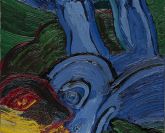 Bengt Lindström
(1925 - 2008)
Bengt Lindström
(1925 - 2008)
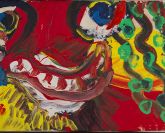 Bengt Lindström
(1925 - 2008)
Bengt Lindström
(1925 - 2008)
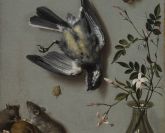 Jean-Batpiste Oudry
Paris, 1686 – Beauvais, 1755)
Jean-Batpiste Oudry
Paris, 1686 – Beauvais, 1755)
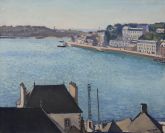 Albert Marquet
(Bordeaux, 1875 - Paris, 1947)
Albert Marquet
(Bordeaux, 1875 - Paris, 1947)
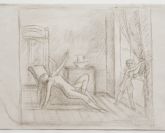 Balthasar K?OSSOWSKI DE ROLA, dit BALTHUS
(Paris, 1908 – Rossinière, 2001)
Balthasar K?OSSOWSKI DE ROLA, dit BALTHUS
(Paris, 1908 – Rossinière, 2001)
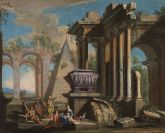 Gioavni Paolo Panini
(Plaisance, 1691 – Rome, 1765)
Gioavni Paolo Panini
(Plaisance, 1691 – Rome, 1765)
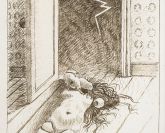 Alberto Savinio
(Athènes, 1891 - Rome, 1952)
Alberto Savinio
(Athènes, 1891 - Rome, 1952)
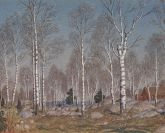 Oskar Bergman
(Stockholm, 1879 - id., 1963)
Oskar Bergman
(Stockholm, 1879 - id., 1963)
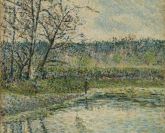 Léon Pourtau
(Bordeaux, 1868 - mort en mer, 1898)
Léon Pourtau
(Bordeaux, 1868 - mort en mer, 1898)
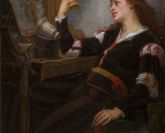 Jean-Baptiste Chatigny
(Lyon, 1834 - id., 1886)
Jean-Baptiste Chatigny
(Lyon, 1834 - id., 1886)
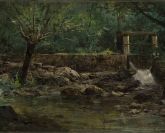 Adolphe Appian
(Lyon, 1814 – id., 1898)
Adolphe Appian
(Lyon, 1814 – id., 1898)
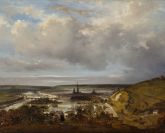 Paul Huet
(Paris, 1803 - id., 1869)
Paul Huet
(Paris, 1803 - id., 1869)
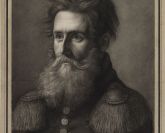 Fabius, dit Fabien Van Risamburgh
(Lyon, 1794 – Saint-Gengoux-le-National, Saône-et-Loire, 1866)
Fabius, dit Fabien Van Risamburgh
(Lyon, 1794 – Saint-Gengoux-le-National, Saône-et-Loire, 1866)
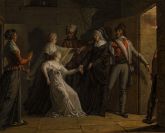 Jacques-Augustin Pajou
(Paris, 1766 b- id., 1828)
Jacques-Augustin Pajou
(Paris, 1766 b- id., 1828)
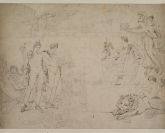 Louis Lafitte
(Paris, 1770 – id., 1828)
Louis Lafitte
(Paris, 1770 – id., 1828)
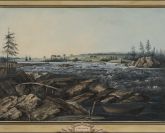 Louis Bélanger
(Paris, 1756 - Stockholm, 1816)
Louis Bélanger
(Paris, 1756 - Stockholm, 1816)
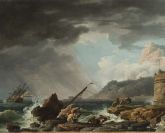 Claude Joseph Vernet
(Avignon, 1714 - Paris, 1799)
Claude Joseph Vernet
(Avignon, 1714 - Paris, 1799)
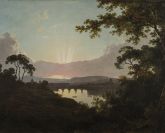 Joseph Wright of Derby
(Derby, 1734 – id., 1797)
Joseph Wright of Derby
(Derby, 1734 – id., 1797)
 Claude-Joseph Vernet
(Avignon, 1714 – Paris, 1789)
Claude-Joseph Vernet
(Avignon, 1714 – Paris, 1789)
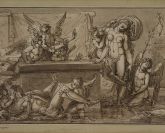 Philippe-Auguste Hennequin
(Luo, 1762 - Leuze, near Tournai, 1833)
Philippe-Auguste Hennequin
(Luo, 1762 - Leuze, near Tournai, 1833)
 Balthasar Klossowski de Rola, known as Balthus
(Paris, 1908 - Rossinière, 2001)
Balthasar Klossowski de Rola, known as Balthus
(Paris, 1908 - Rossinière, 2001)
 Jean-Baptiste Oudry
(Paris, 1686 - Beauvais, 1755)
Jean-Baptiste Oudry
(Paris, 1686 - Beauvais, 1755)
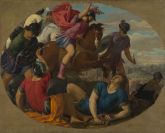 Jean Daret
(Brussels, 1614 - Paris, 1668)
Jean Daret
(Brussels, 1614 - Paris, 1668)
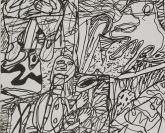 Jean Dubuffet
(Le Havre, 1901 - Paris, 1985)
Jean Dubuffet
(Le Havre, 1901 - Paris, 1985)
 Fabius, known as Fabien van Risamburgh
(Lyon, 1794 - Saint-Gengoux-le-National, Saône-et-Loire, 1866)
Fabius, known as Fabien van Risamburgh
(Lyon, 1794 - Saint-Gengoux-le-National, Saône-et-Loire, 1866)
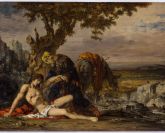 Gustave Moreau
(Paris, 1826 – id., 1898)
Gustave Moreau
(Paris, 1826 – id., 1898)
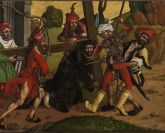 Rhin supérieur, entourage de Martin Schongauer ?
Rhin supérieur, entourage de Martin Schongauer ?
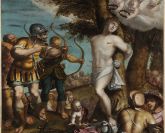 Giovanni Battista Castello, dit Il Bergamasco
(Crema, vers 1526 – El Escorial, 1569)
Giovanni Battista Castello, dit Il Bergamasco
(Crema, vers 1526 – El Escorial, 1569)
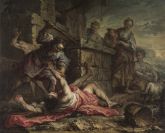 Giuseppe Antonio Pianca
Agnona, 1703 – Milano, 1762)
Giuseppe Antonio Pianca
Agnona, 1703 – Milano, 1762)
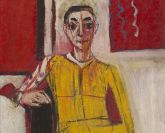 Pierre TAL-COAT (Pierre JACOB)
(Clohars-Carnoët, 1905 – Saint-Pierre-de-Bailleul, 1985)
Pierre TAL-COAT (Pierre JACOB)
(Clohars-Carnoët, 1905 – Saint-Pierre-de-Bailleul, 1985)
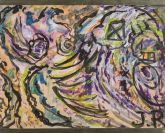 Jean Raine
(Bruxelles, 1927 - Rochetaillées-sur-Saône, 1986)
Jean Raine
(Bruxelles, 1927 - Rochetaillées-sur-Saône, 1986)
 Camille Rogier
(1810-1896)
Camille Rogier
(1810-1896)
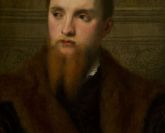 Paris BORDONE
(Trévise, 1500 - Venise, 1571)
Paris BORDONE
(Trévise, 1500 - Venise, 1571)
-165x133.jpg) Maître de l'Incrédulitgé de saint Thomas (Jean Ducamps ?)
Actif à Rome de la fin des années 1920 à 1637
Maître de l'Incrédulitgé de saint Thomas (Jean Ducamps ?)
Actif à Rome de la fin des années 1920 à 1637
-165x133.jpg) Claude Nattiez
(actif à Rome entre 1641 et 1660)
Claude Nattiez
(actif à Rome entre 1641 et 1660)
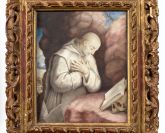 Simon Demasso
(Lyon, 1658 - id., 1738
Simon Demasso
(Lyon, 1658 - id., 1738
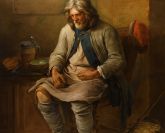 Charles-François Hutin
(Paris, 1715-Dresde, 1776)
Charles-François Hutin
(Paris, 1715-Dresde, 1776)
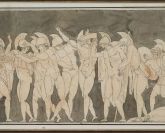 Louis Adrien MASRELIEZ
(Paris, 1748 - Stockholm, 1810)
Louis Adrien MASRELIEZ
(Paris, 1748 - Stockholm, 1810)
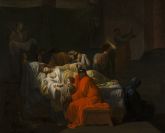 Pierre Peyron
(Aix-en-Provence, 1744 - Paris, 1814)
Pierre Peyron
(Aix-en-Provence, 1744 - Paris, 1814)
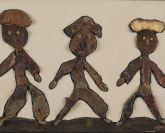 Philippe DEREUX
(Lyon, 1918 - Villeurbanne, 2001)
Philippe DEREUX
(Lyon, 1918 - Villeurbanne, 2001)
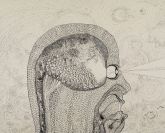 Robert MALAVAL
(Nice, 1937 - Paris, 1980)
Robert MALAVAL
(Nice, 1937 - Paris, 1980)
-165x133.jpg) Bernard REQUICHOT
(Asnières-sur-Vègre, 1929 - Paris, 1961)
Bernard REQUICHOT
(Asnières-sur-Vègre, 1929 - Paris, 1961)
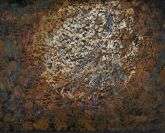 Bernard REQUICHOT
(Asnières-sur-Vègre, Sarthe, 1929 – Paris, 1961)
Bernard REQUICHOT
(Asnières-sur-Vègre, Sarthe, 1929 – Paris, 1961)
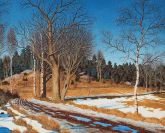 Oskar Bergman
(Stockholm, 1879 – id., 1963)
Oskar Bergman
(Stockholm, 1879 – id., 1963)
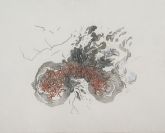 Mélanie DELATTRE-VOGT
(Valenciennes, 1984)
Mélanie DELATTRE-VOGT
(Valenciennes, 1984)
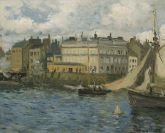 Helmer Osslund
(Tuna, 1866 – Stockholm, 1938)
Helmer Osslund
(Tuna, 1866 – Stockholm, 1938)
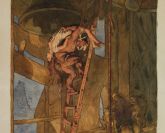 Marcel ROUX
(Bessenay, 1878 – Chartres, 1922)
Marcel ROUX
(Bessenay, 1878 – Chartres, 1922)
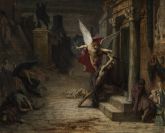 Jules-Elie DELAUNAY
(Nantes, 1828 – Paris, 1891)
Jules-Elie DELAUNAY
(Nantes, 1828 – Paris, 1891)
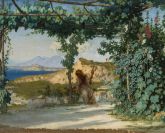 Ernest Antoine Hebert
(Grenoble, 1817 – La Tronche, 1908)
Ernest Antoine Hebert
(Grenoble, 1817 – La Tronche, 1908)
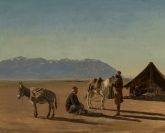 Harald Jerichau
(Copenhague, 1851 – Rome, 1878)
Harald Jerichau
(Copenhague, 1851 – Rome, 1878)
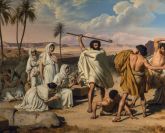 Eugène Roger
(Sens, 1807 – Paris, 1840)
Eugène Roger
(Sens, 1807 – Paris, 1840)
-165x133.jpg) François-Marius Granet
(Aix-en-Provence, 1775 – id., 1849)
François-Marius Granet
(Aix-en-Provence, 1775 – id., 1849)
-165x133.jpg) Alberto GIRONELLA
(Mexico, 1929 – Valle de Bravo (Mexique), 1999)
Alberto GIRONELLA
(Mexico, 1929 – Valle de Bravo (Mexique), 1999)
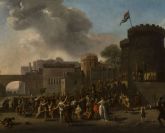 Nicolas-Antoine Taunay
(Paris, 1755 – id., 1830)
Nicolas-Antoine Taunay
(Paris, 1755 – id., 1830)
-165x133.jpg) François-Marius Granet
(Aix-en-Provence, 1775 – id., 1849)
François-Marius Granet
(Aix-en-Provence, 1775 – id., 1849)
-165x133.jpg) Jean-Joseph-Xavier Bidauld
(Carpentras, 1758 – Montmorency, 1846)
Jean-Joseph-Xavier Bidauld
(Carpentras, 1758 – Montmorency, 1846)
-165x133.jpg) Jacques Stella
(Lyon, 1596 – Paris, 1657)
Jacques Stella
(Lyon, 1596 – Paris, 1657)
 Paris BORDONE
(Treviso, 1500 – Venice, 1571)
Paris BORDONE
(Treviso, 1500 – Venice, 1571)
-165x133.jpg) Raoul UBAC
(Malmedy or Cologne, 1910 – Dieudonné, 1985)
Raoul UBAC
(Malmedy or Cologne, 1910 – Dieudonné, 1985)
-165x133.jpg) Robert Malaval
(Nice, 1937 – Paris, 1980)
Robert Malaval
(Nice, 1937 – Paris, 1980)
 Pierre Peyron
(Aix-en-Provence, 1744 – Paris, 1814)
Pierre Peyron
(Aix-en-Provence, 1744 – Paris, 1814)
 Jules-Elie Delaunay
(Nantes, 1828 – Paris, 1891)
Jules-Elie Delaunay
(Nantes, 1828 – Paris, 1891)
 Marcel Roux
(Bessenay, 1878 – Chartres, 1922)
Marcel Roux
(Bessenay, 1878 – Chartres, 1922)
-165x133.jpg) Alberto Gironella
(Mexico, 1929 – Valle de Bravo (Mexico), 1999) 32. El entierro de Zapata y ostros enterramientos [Funeral of Zapata and Other Burials], Elas de Oro II, 1972 A tribute to Zapata Alberto Gironella (1929-1999) had his first exhibition in 1952 in a gallery in
Alberto Gironella
(Mexico, 1929 – Valle de Bravo (Mexico), 1999) 32. El entierro de Zapata y ostros enterramientos [Funeral of Zapata and Other Burials], Elas de Oro II, 1972 A tribute to Zapata Alberto Gironella (1929-1999) had his first exhibition in 1952 in a gallery in
-165x133.jpg) Thomas Blanchet
(Paris, 1614 – Lyon, 1689)
Thomas Blanchet
(Paris, 1614 – Lyon, 1689)
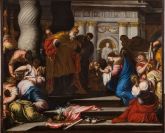 Valentin Lefèvre
(Bruxelles, 1637 – Venise, 1677)
Valentin Lefèvre
(Bruxelles, 1637 – Venise, 1677)
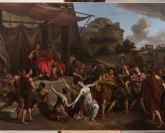 Laurent Pécheux
Lyon, 1729 – Turin, 1821
Laurent Pécheux
Lyon, 1729 – Turin, 1821
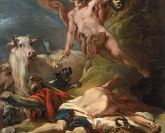 Jean-Baptiste Deshays
(Rouen, 1729 – Paris, 1765)
Jean-Baptiste Deshays
(Rouen, 1729 – Paris, 1765)
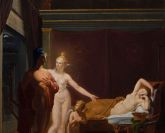 Joseph François Ducq
(Ledeghem, 1762 – Bruges, 1829)
Joseph François Ducq
(Ledeghem, 1762 – Bruges, 1829)
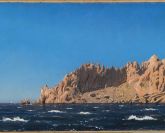 Holger Drachmann
(Copenhague, 1846 – Hornbaek, 1908)
Holger Drachmann
(Copenhague, 1846 – Hornbaek, 1908)
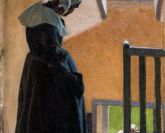 Pelle Swedlund
(Gävle, 1865 – id., 1947)
Pelle Swedlund
(Gävle, 1865 – id., 1947)
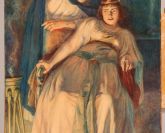 Arthur George Walker
(Londres, 1861 – id., 1939)
Arthur George Walker
(Londres, 1861 – id., 1939)
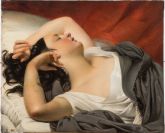 Claude-Marie DUBUFE
(Paris, 1790 – Celle-Saint-Cloud, 1864)
Claude-Marie DUBUFE
(Paris, 1790 – Celle-Saint-Cloud, 1864)
-165x133.jpg) Nicolas Bertin
(Paris, 1668 – id., 1736)
Nicolas Bertin
(Paris, 1668 – id., 1736)
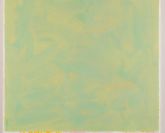 Vincent Bioulès
(Montpellier, 1938)
Vincent Bioulès
(Montpellier, 1938)
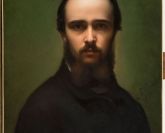 Paul Borel
(Lyon, 1828 – id., 1913)
Paul Borel
(Lyon, 1828 – id., 1913)
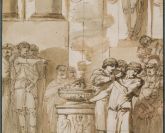 Giuseppe Cades
(Rome, 1750 – id., 1799)
Giuseppe Cades
(Rome, 1750 – id., 1799)
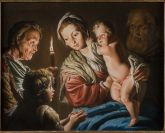 Andreas Joseph Chandelle
(Francfort, 1743-Id., 1820)
Andreas Joseph Chandelle
(Francfort, 1743-Id., 1820)
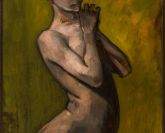 Émilie Charmy
(Saint Etienne, 1978 – Crosne, 1974)
Émilie Charmy
(Saint Etienne, 1978 – Crosne, 1974)
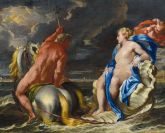 Michel Dorigny
(Saint-Quentin, 1616 – Paris, 1665)
Michel Dorigny
(Saint-Quentin, 1616 – Paris, 1665)
-165x133.jpg) Gustaf Fjaestad
(Stockholm, 1868 – Arvika, 1948)
Gustaf Fjaestad
(Stockholm, 1868 – Arvika, 1948)
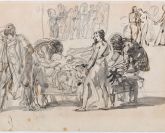 François Gérard
(Rome, 1770 – Paris, 1837)
François Gérard
(Rome, 1770 – Paris, 1837)
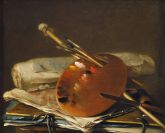 Nicolas Henri Jeaurat de Bertry
(Paris, 1728 – id., vers 1796)
Nicolas Henri Jeaurat de Bertry
(Paris, 1728 – id., vers 1796)
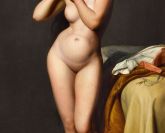 Paul Jourdy
(Dijon, 1805 – Paris, 1856)
Paul Jourdy
(Dijon, 1805 – Paris, 1856)
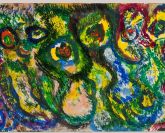 Jean Raine
(Bruxelles, 1927 – Rochetaillée-sur-Saône, 1986)
Jean Raine
(Bruxelles, 1927 – Rochetaillée-sur-Saône, 1986)
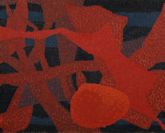 Bernard Réquichot
(Asnières-sur-Vègre, Sarthe, 1929 – Paris, 1961)
Bernard Réquichot
(Asnières-sur-Vègre, Sarthe, 1929 – Paris, 1961)
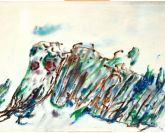 Henri Michaux
(1899, Namur – 1984, Paris)
Henri Michaux
(1899, Namur – 1984, Paris)
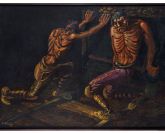 Mario Alejandro Yllanes
(Oruro, 1913 – 1946 ?)
Mario Alejandro Yllanes
(Oruro, 1913 – 1946 ?)
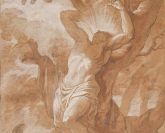 Joseph-Benoît Suvée
(Bruges, 1743 – Rome, 1807)
Joseph-Benoît Suvée
(Bruges, 1743 – Rome, 1807)
-165x133.jpg) Joseph-Benoît Suvée
(Bruges, 1743 – Rome, 1807)
Joseph-Benoît Suvée
(Bruges, 1743 – Rome, 1807)
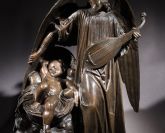 James Pradier
(Genève, 1790 – Bougival, 1852)
James Pradier
(Genève, 1790 – Bougival, 1852)
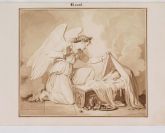 Pierre Révoil
(Lyon, 1776 – Paris, 1842)
Pierre Révoil
(Lyon, 1776 – Paris, 1842)
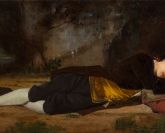 Jean-Baptiste Chatigny
(Lyon, 1834 – id., 1886)
Jean-Baptiste Chatigny
(Lyon, 1834 – id., 1886)
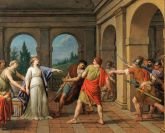 Louis Jean-François LAGRENEE, dit l’Aîné
(Paris, 1725 – Paris, 1805)
Louis Jean-François LAGRENEE, dit l’Aîné
(Paris, 1725 – Paris, 1805)
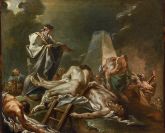 Michel-François Dandré-Bardon
Aix-en-Provence, 1700 – Paris, 1783
Michel-François Dandré-Bardon
Aix-en-Provence, 1700 – Paris, 1783
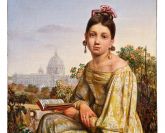 Hans Ditlev Martens
(Kiel, 1795 – Id., 1864)
Hans Ditlev Martens
(Kiel, 1795 – Id., 1864)
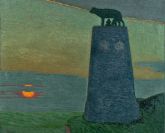 Pelle Swedlund
(Gävle, 1865 – Id., 1947)
Pelle Swedlund
(Gävle, 1865 – Id., 1947)
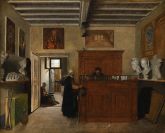 François-Marius Granet
(Aix-en-Provence, 1775 – id., 1849)
François-Marius Granet
(Aix-en-Provence, 1775 – id., 1849)
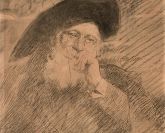 Jeanne Bardey
(Lyon, 1872 - id., 1954)
Jeanne Bardey
(Lyon, 1872 - id., 1954)
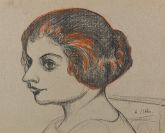 André Utter
(Paris, 1886 - id., 1948)
André Utter
(Paris, 1886 - id., 1948)
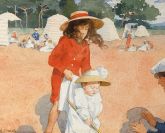 Élisabeth Sonrel
(Tours, 1874 - Sceaux, 1953)
Élisabeth Sonrel
(Tours, 1874 - Sceaux, 1953)
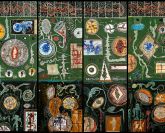 Bernard Pruvost
(Alger, 1952)
Bernard Pruvost
(Alger, 1952)
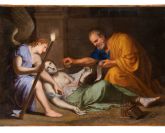 Jacques Stella
(Lyon, 1596 - Paris, 1657)
Jacques Stella
(Lyon, 1596 - Paris, 1657)
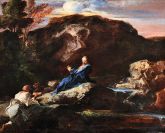 Louis Cretey
(Lyon, before 1638 - Rome (?), after 1702)
Louis Cretey
(Lyon, before 1638 - Rome (?), after 1702)
 Michel-François Dandré-Bardon
(Aix-en-Provence, 1700 - Paris, 1783)
Michel-François Dandré-Bardon
(Aix-en-Provence, 1700 - Paris, 1783)
 François-Marius Granet
(Aix-en-Provence, 1775 - Id., 1849)
François-Marius Granet
(Aix-en-Provence, 1775 - Id., 1849)
 Hans Ditlev Martens
(Kiel, 1795 - Kiel, 1864)
Hans Ditlev Martens
(Kiel, 1795 - Kiel, 1864)
 Pelle Swedlund
(Gävle, 1865 - Id., 1947)
Pelle Swedlund
(Gävle, 1865 - Id., 1947)
 Jeanne Bardey
(Lyon, 1872 - id., 1954)
Jeanne Bardey
(Lyon, 1872 - id., 1954)
 André Utter
(Paris, 1886 – Id., 1948)
André Utter
(Paris, 1886 – Id., 1948)
 Bernard Pruvost
(Algiers, 1952)
Bernard Pruvost
(Algiers, 1952)
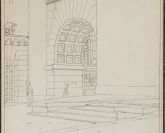 Christoffer Wilhelm Eckersberg
(Sundeved, 1783 - Copenhague, 1853)
Christoffer Wilhelm Eckersberg
(Sundeved, 1783 - Copenhague, 1853)
 Jean-François Forty (actif à Paris, 1775–90)
Jean-François Forty (actif à Paris, 1775–90)
 Thomas Blanchet
(Paris, 1614 - Lyon, 1689)
Thomas Blanchet
(Paris, 1614 - Lyon, 1689)
 Claude Nattiez
(actif à Rome entre 1641 et 1660)
Claude Nattiez
(actif à Rome entre 1641 et 1660)
 Jean Charles Frontier
(Paris, 1701 – Lyon, 1763)
Jean Charles Frontier
(Paris, 1701 – Lyon, 1763)
 Pierre Nicolas Legrand de Sérant
(Pont-l’Évêque, 1758 – Berne, 1829)
Pierre Nicolas Legrand de Sérant
(Pont-l’Évêque, 1758 – Berne, 1829)
 Jean-Baptiste Isabey
(Nancy, 1767 – Paris, 1855)
Jean-Baptiste Isabey
(Nancy, 1767 – Paris, 1855)